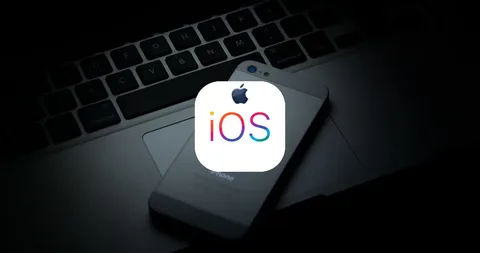In the world of education, assessments are integral to measuring a student’s knowledge, skills, and progress. However, the traditional methods of exam evaluation — which often involve manual paper-based assessments — have long been plagued by inefficiencies, delays, and human error. Enter the Onscreen Evaluation System, a game-changing innovation that is revolutionizing how exams are evaluated and graded. This system, which leverages technology to digitize the evaluation process, offers a faster, more accurate, and transparent alternative to conventional methods.
What is the Onscreen Evaluation System?
The Onscreen Evaluation System (OES) is a technology-driven solution designed to evaluate student responses to exams directly on a digital platform. Instead of manually grading paper-based answer sheets, the entire evaluation process is conducted on a computer screen. This system typically involves scanning the answer sheets and presenting them digitally for evaluation, or it may be used in conjunction with online exams where answers are automatically submitted and reviewed.
The core advantage of this system lies in its ability to reduce human intervention, streamline grading, and improve transparency, making the examination process faster, more efficient, and less prone to error.
Key Benefits of Onscreen Evaluation
- Faster Grading and Results
One of the most significant advantages of the Onscreen Evaluation System is the speed at which exams are graded. Traditionally, paper-based exams require lengthy manual effort, which can take days or even weeks before results are published. With onscreen evaluation, the grading process is not only faster but also more accurate. In many cases, automated grading for multiple-choice questions (MCQs) can be done almost instantly, and the time needed for subjective answer sheets can be significantly reduced. - Accuracy and Consistency
Human error is an inevitable part of manual grading, whether it’s missed marks, inconsistent evaluation, or misinterpretation of student responses. The Onscreen Evaluation System minimizes these errors by offering standardized rubrics and automated checks. Evaluators can easily refer to guidelines, ensuring consistency across all graded responses. In addition, features like spell check and algorithm-driven grading reduce the likelihood of manual mistakes. - Enhanced Security and Transparency
Onscreen evaluation offers a higher level of security compared to traditional paper-based exams. Since answers are stored digitally, it’s easier to prevent malpractices such as cheating or answer sheet tampering. Digital systems can also track who graded what, providing a clear audit trail that enhances the transparency of the evaluation process. Students can even access their exam history and results online, ensuring they know exactly how their answers were scored. - Cost and Resource Efficiency
The logistics of paper-based exams can be costly and resource-intensive. The costs of printing, transporting, and storing thousands of answer sheets can quickly add up. Additionally, the manual labor required to grade these papers demands time and human resources. By digitizing the evaluation process, institutions can save significantly on these costs and redirect resources toward other important academic functions. - Eco-Friendly Solution
With the growing emphasis on sustainability, reducing paper usage in examinations is a significant environmental benefit. Onscreen evaluation eliminates the need for paper altogether, cutting down on waste and reducing the carbon footprint of the entire examination process. This aligns with the global push toward eco-friendly practices and supports educational institutions in their sustainability goals. - Real-Time Data Analytics and Feedback
Onscreen Evaluation systems can provide immediate feedback to students, helping them understand their performance in real-time. For educational institutions, the system can generate valuable data analytics, providing insights into overall student performance, areas of improvement, and trends over time. This data-driven approach enables schools, colleges, and universities to make informed decisions about curriculum changes, teaching methods, and student support systems. - Better Handling of Large Volumes
As educational institutions expand and enroll more students, managing exams for large numbers can become overwhelming. Onscreen evaluation systems are scalable, allowing institutions to handle a larger volume of exams without sacrificing efficiency or accuracy. Whether it’s a local school exam or a nationwide university entrance test, the system can be adapted to fit the needs of any institution, regardless of size.
How Onscreen Evaluation Works
In an Onscreen Evaluation System, the typical workflow might look something like this:
- Examination Setup: Exams are created in digital formats, often integrated into an online portal. For paper-based exams, answer sheets are scanned and converted into digital images.
- Student Response Submission: In online exams, students submit their answers through a digital platform. For offline exams, students’ handwritten responses are scanned into the system for evaluation.
- Evaluation Process: Subjective and objective questions are evaluated using the system’s automated grading tools or by manual input from evaluators. For multiple-choice questions, automated algorithms can quickly grade responses, while subjective answers might be scored based on predefined rubrics.
- Result Generation and Feedback: After evaluation, results are compiled and displayed in real-time. Students receive instant feedback on their performance, with detailed explanations of their mistakes, allowing them to learn from their errors immediately.
- Archival and Reporting: Results are stored securely in digital formats and can be easily accessed for future reference. This provides both students and institutions with valuable historical data.
Challenges and Considerations
While the Onscreen Evaluation System offers numerous benefits, there are also a few challenges that need to be addressed for its widespread adoption:
- Infrastructure Requirements: Schools, colleges, and universities need robust digital infrastructure — including computers, high-speed internet, and secure servers — to implement an onscreen evaluation system. This could require significant initial investment.
- Digital Literacy: Both students and teachers must be well-versed in using digital platforms and tools. For institutions in areas with low digital literacy, training and support systems must be established.
- Privacy and Data Security: With digital exams comes the responsibility of safeguarding sensitive student data. Educational institutions must implement strong cybersecurity measures to prevent data breaches and ensure the privacy of students’ information.
- Resistance to Change: Like any new system, the shift from traditional paper-based evaluations to onscreen evaluations may face resistance from educators or students who are accustomed to the old way of doing things. Overcoming this resistance will require thoughtful implementation and clear communication of the system’s benefits.
Conclusion
The Onscreen Evaluation System is transforming the way exams are conducted and evaluated, making them faster, more accurate, and more transparent. As educational institutions continue to embrace technology, this system stands out as a key innovation that not only improves efficiency but also supports fairer and more objective assessments. With the right infrastructure and support, the Onscreen Evaluation System promises to be a cornerstone in the future of education — helping to revolutionize exams and set a new standard for how student performance is assessed and managed.



